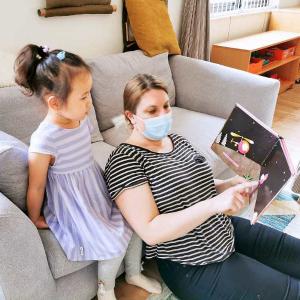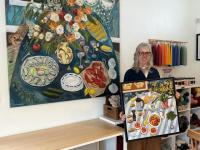Remley in China: A pandemic update
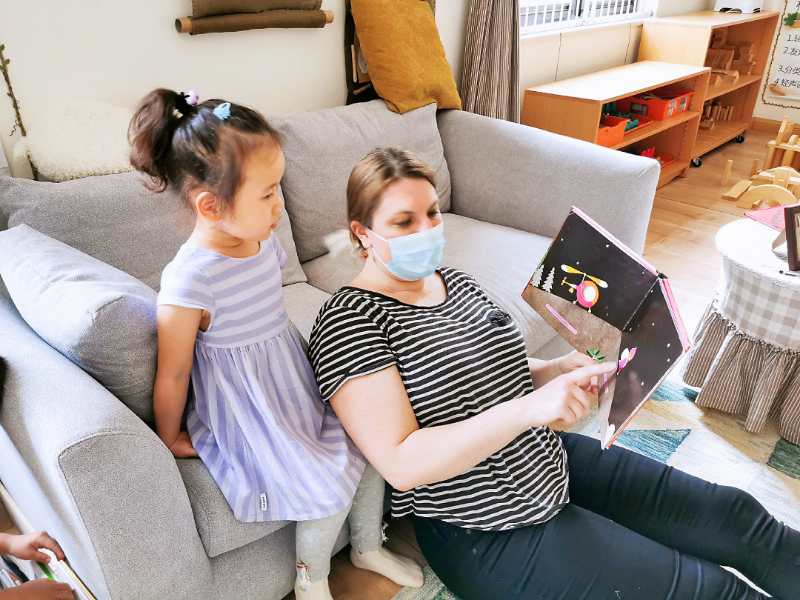 Carolyn Remley reads to a student. Courtesy photo
Carolyn Remley reads to a student. Courtesy photo
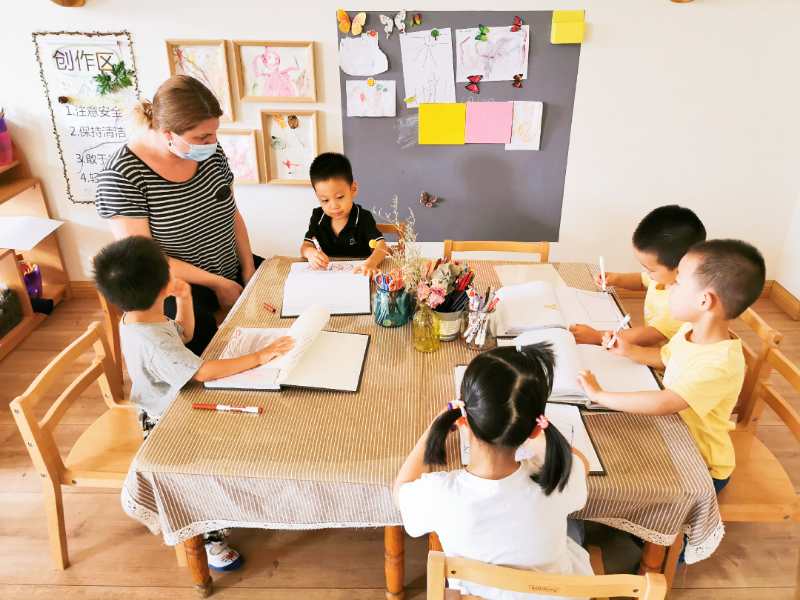 A scene at Carolyn Remley’s school. Courtesy photo
A scene at Carolyn Remley’s school. Courtesy photo
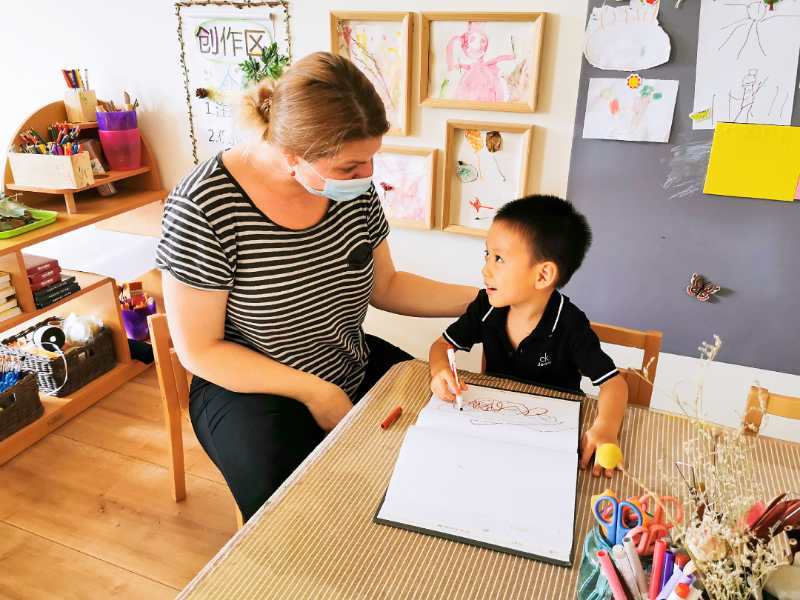 Carolyn Remley and a student. Courtesy photo
Carolyn Remley and a student. Courtesy photo
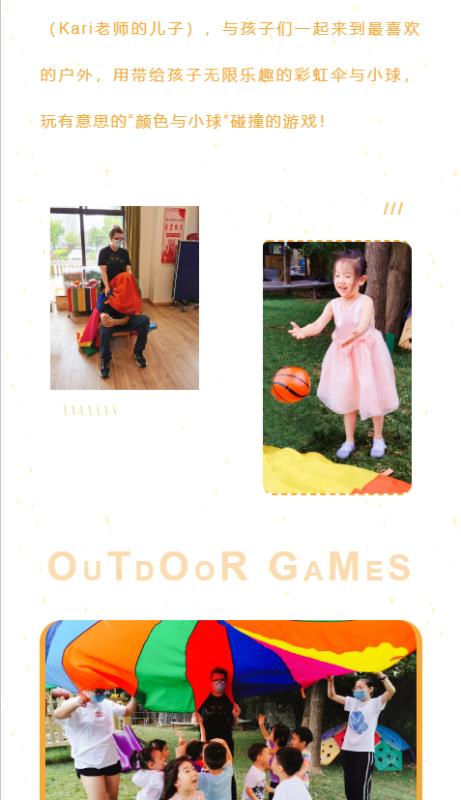 School activities. Courtesy photo
School activities. Courtesy photo
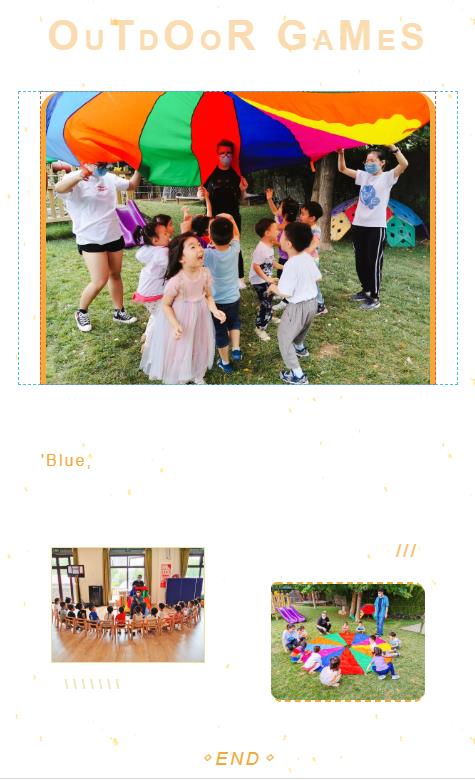 School activities. Courtesy photo
School activities. Courtesy photo
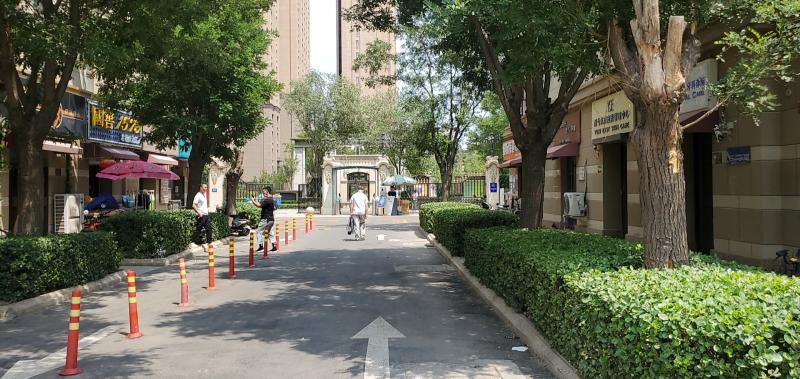 Tianjin, China. Courtesy photo
Tianjin, China. Courtesy photo
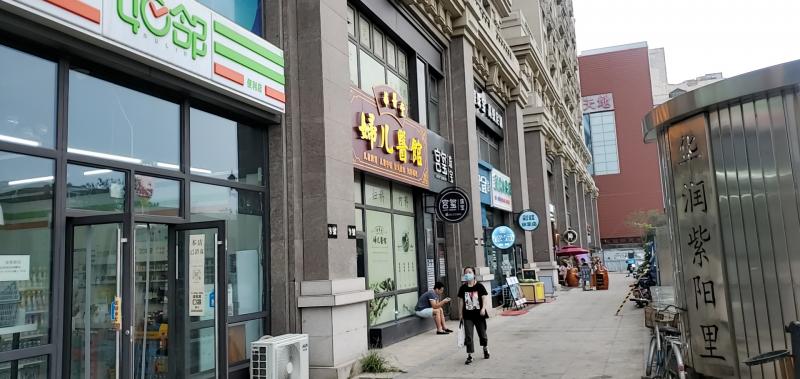 Tianjin, China. Courtesy photo
Tianjin, China. Courtesy photo
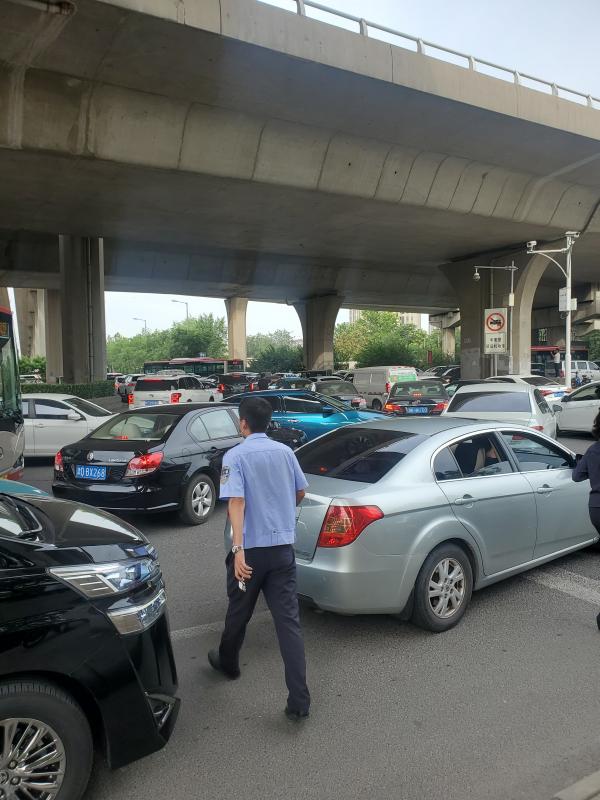 Tianjin, China. Courtesy photo
Tianjin, China. Courtesy photo
 Carolyn Remley reads to a student. Courtesy photo
Carolyn Remley reads to a student. Courtesy photo
 A scene at Carolyn Remley’s school. Courtesy photo
A scene at Carolyn Remley’s school. Courtesy photo
 Carolyn Remley and a student. Courtesy photo
Carolyn Remley and a student. Courtesy photo
 School activities. Courtesy photo
School activities. Courtesy photo
 School activities. Courtesy photo
School activities. Courtesy photo
 Tianjin, China. Courtesy photo
Tianjin, China. Courtesy photo
 Tianjin, China. Courtesy photo
Tianjin, China. Courtesy photo
 Tianjin, China. Courtesy photo
Tianjin, China. Courtesy photo
As some of you may have read previously, I am a former social worker turned English teacher in China. My now 16-year-old son and I have lived in Tianjin for almost four years. I’m currently the foreign director at an international kindergarten. This just means that the company attempts to incorporate western style educational ideals and I do my best to navigate between 5000 years of Chinese culture and my American spirit of innovation, creativity, independence, and overall desire to shake things up!
Before I came to China, I had images in my mind of rural villages, ancient technology, a stern and prevalent police force, and lots of delicious crab rangoons. While everything, except crab rangoons, does exist in China, it’s rarely seen and not a part of daily life for most citizens. The homes are modern, the traffic consists of BMWs, Toyotas, and even once in a while you might spot a Ford. McDonalds, Starbucks, and KFC are on every corner. WiFi is everywhere and I’m never in a place that doesn’t have full bars for my cell phone data. Sometimes the only sign that I’m in a foreign country are the hordes of e-bikes and bicycles, and the city maintenance guys using homemade straw brooms.
There are gorgeous parks near any neighborhood where one can find people dancing, singing karaoke, creating art, or playing chess. One of my favorite things to watch is the water painters. They have long brushes on sticks that they dip in a nearby pond and then create a beautiful masterpiece on the pavement just using water – then the water dries, and their entire creation just disappears. The parks also have many permanent feline residents. Ancient Chinese believed that cats were family guardians, protected crops, and scared away ghosts. Many scholars even wrote poems to their cats.
Transportation around and between any city that I’ve visited is fast and convenient. I can take a fast train from Beijing to Shanghai, think DC to Jacksonville, and arrive in 6 hours, by train! Ticketing is all online through various apps, and I just use WeChat to pay. Intracity transport is well connected through networks of buses and subway systems and of course millions of DiDi drivers, the Chinese version of Uber. Taking a DiDi anywhere in the city costs an average of about 5$ or 35¥.
Cities are assessed on a tier level. Tier 1 cities are the most modern and usually the wealthiest as well, Beijing and Shanghai for example. These are also those with the highest populations. Tier 2 cities are next, such as the one we live in, Tianjin. Though a tier 2, Tianjin’s population is still a whopping 15 million and the modern architecture of most neighborhoods often reminds me of New York.
I’m not sure exactly what all the measures are for determining a city’s tier status, but thanks to a quick internet search, I found that the following criteria are typically used to help classify cities into six different tiers: Concentration of commercial resources; City’s pivotability; Citizen vitality; Lifestyle diversity; and Flexibility in the future. Some of these criteria are vague and obviously open to interpretation. Further, according to this link, western influences can be used to determine if a city is a lower or higher tier, how many Starbucks there are for example. https://www.china-briefing.com/news/chinas-city-tier-classification-defined/
Back in April, people in Chinese cities were starting to emerge again and socialize in small amounts. Schools were still closed but restaurants and malls were open again. Spaces in restaurants were limited for social distancing but you could sit, remove your mask, and enjoy a meal with friends. People could enter only if they were wearing a mask and had a green check mark when scanning the QR code for WeChat health.
You may recall from the previous article that we use WeChat for everything. If I have to pay any utilities I do it through WeChat - water, electricity, phone, everything. If I want to order a baked potato delivered to my door in 15 minutes, I can use WeChat. I can schedule massages, cleaning services, buy second-hand goods, chat with friends, send money to someone, check my bank account, etc., etc., etc. Everything is done via this app. I rarely have or use cash anymore, it’s completely unnecessary. Everyone from street food vendors to taxi drivers to supermarkets and Volkswagen dealerships will have a way to receive money from you just by scanning a QR code.
Update on COVID-19 conditions
Since April, progress back to normalcy has continued albeit with small scares and stricter protocol resurgences. People didn’t really start taking their masks off until July. Now, walking around my neighborhood I will see about half of the people wearing them. Masks are still required in high density areas such as such as malls or transport stations and we no longer have to scan a code everywhere we go, except in those same places. Schools reopened in mid-June and all staff were required to wear masks. Students and staff had their temperature checked every morning before entering and vigorous hand washing was encouraged throughout the day.
For reference, those of us living in China were on strict movement protocols from late January to mid-April. From mid-April to Mid-June, life was pretty much back to normal except for schools, mask and scanning requirements. Travel between cities could occur as usual provided you had the appropriate health codes. Since school re-openings, there have been no occurrences of the virus spreading amongst school children or staff.
The Chinese government has kept up strict monitoring and vigorous prevention methods when a new case does pop up in a community. There have been a couple situations where citizens were found to have contracted the virus. In one case, an employee at a seafood market in Beijing was found to be spreading it. Anyone in his work or home districts suddenly got red or yellow health codes and had to be tested and contained. People in those neighborhoods were again confined in their movement and required to scan their health code at every business or residence entrance as well as have their temperature checked. Anyone who had traveled in that vicinity was asked to self-quarantine.
Another case is occurring now, stemming from a city called Dalian with similar circumstances. The Chinese government has a risk criterion for every city and even each neighborhood in every city. Five areas in Dalian have been determined high-risk and put on what is called “closed-loop management” with all residents required to undergo the nucleic acid test for COVID-19. Employees of the seafood market are given the serum antibody test and every three days taking the nucleic acid test. All intercity automobile passenger transport has been suspended. Residents in low-risk areas in the city are forbidden to travel by plane or train unless they have a recent, in the last seven days, negative nucleic acid test certificate. This tiny outbreak has only accumulated 44 cases since it was discovered July 23rd, yet this is the response. In five days, 2.96 million nucleic acid samples were collected in Dalian.
For us, life is progressing mostly unimpeded. My son has picked up a lot of part-time work as students have had patchy education over the last six months. He works one on one with them doing activities, reading books, playing games, and through this casual and continuous interaction, the students can improve their speaking and listening abilities. He makes 100¥ per hour doing this, about 15$, not bad for a teenager!
I’m currently designing the English Language Curriculum for the school I work for. We have students from age two to six. The school is embracing the Reggio educational philosophy which is similar to Montessori, but emphasizes play over work, and is more art and technology based. One of the biggest problems with Chinese vs Western Education is the Chinese focus on performance, e.g. test scores, and little or no attention at all on problem solving, critical thinking, and embracing personality differences. As China becomes more interconnected with the rest of the world, many schools are adopting approaches that hope to balance the richness of Chinese culture and tradition with the Western ideal of celebrating children’s innate curiosity rather than trying to make them fit a pre-fabricated mold. The kindergarten is called Smile Candy in English, following a not uncommon theme to place some words together because they sound professional, warm, and welcoming when translated into Chinese, 斯迈尔凯蒂.
If there are any teachers or families who would be interested in doing some video pen pal activities with us, you’re welcome to request my contact information. We would love to hear from you and create a special bond between the young students in both countries. For most of the early education schools in Tianjin, there will be no summer holiday. Parents who have had their children full-time for half a year are anxious to be back to work and on a normal schedule again. Also, there are limited places to travel to, as going out of the country is an incredibly risky and unnecessarily expensive endeavor, and everyone had more than enough time to visit family and friends in the last few months around China.
Luckily for my son and I, we’re headed off on a holiday to Sanya, a city in the island province of Hainan in south-west China. The province shares the sea with Vietnam, and a bit further away, the Philippines. Sanya is often cited as the Hawaii of China and was minimally affected even at the height of the COVID-19 outbreak. We’re excited to have a break but still disappointed, as this is the consolation prize for not being able to go to Europe for my 20th year reunion with the Hungarian exchange program I went on my senior year while enrolled at Boothbay Region High School.
Hope everyone at home is staying safe, happy, and healthy. Eat some crab rangoons for us!
Carolyn Remley is the granddaughter of Estelle Appel of Boothbay.
Event Date
Address
United States

